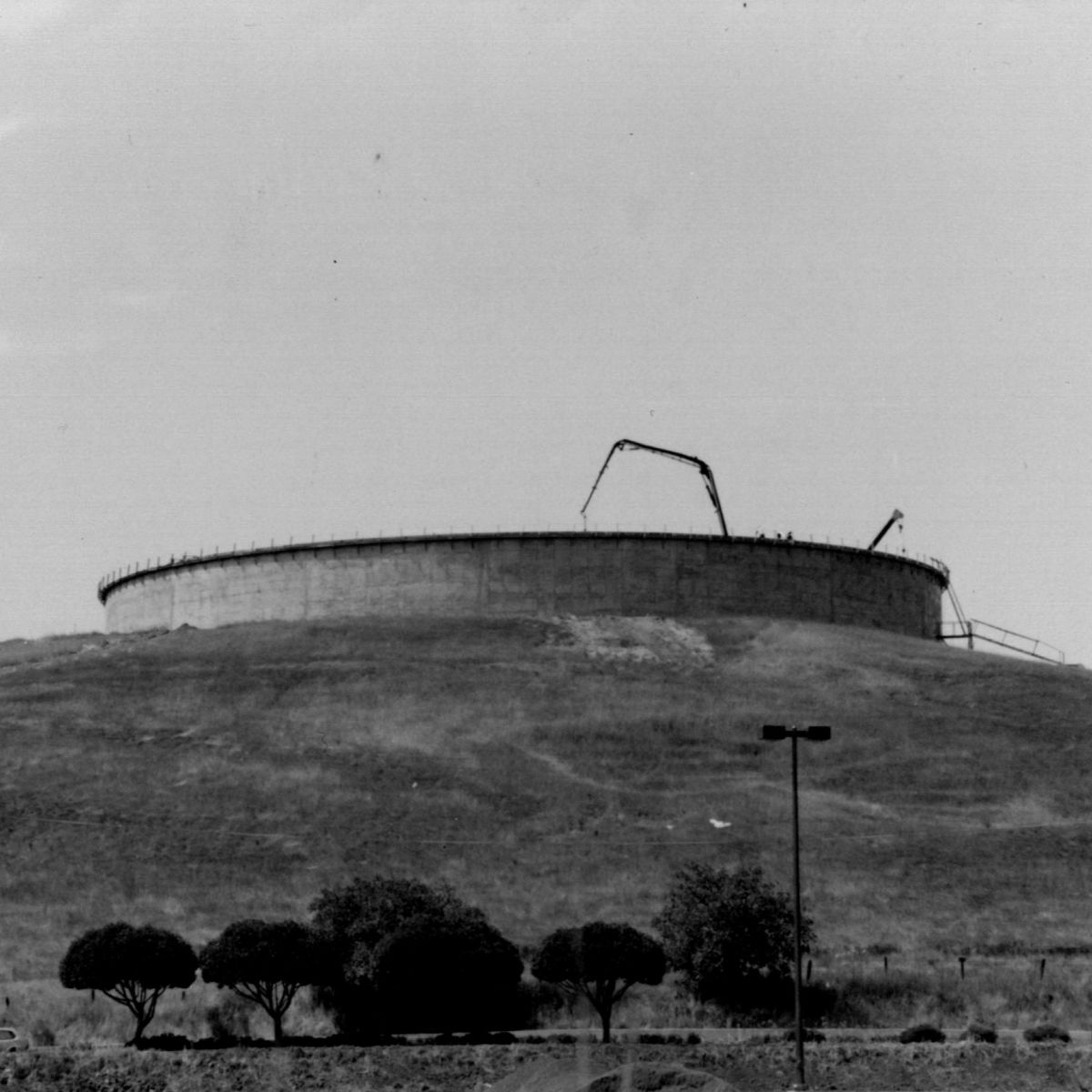Now You See It ... Soon You Won't
Now You See It ... Soon You Won't

"Pleasanton has traditionally always had a great water storage shortage” says George Deeter, Owner's Representative for The Prudential Insurance Company of America. "I've heard that there were cases when if vast amounts of water were required all at once some residents couldn't even take showers in the morning!"
Many an old-time Pleasanton resident will confirm that statement. However, thanks to the North Pleasanton Water Improvement District (NPWID), a new and unique water reservoir is being constructed atop a hill overlooking the Stoneridge Drive-Foothill Road Intersection which should end Pleasanton's storage problem once and for all.
The two million dollar project, funded entirely by the NPWID at no cost to the tax payer, began in December of last year. The tank will be completed and filled by December of this year, and by June, 1985, it will have become indistinguishable from the surrounding area. The hill will, for all appearances, look almost exactly as it was before construction began!
"When the project is completed, the dirt will be built back up around the sides of the tank so that, from the street, it will just look like all the other hills” explains Deeter, the man in charge of the project for the NPWID. "Basically, all we did was cut away from the hill to construct the tank. Once that's done, the earth will then be built back up the sides of the tank to reconstruct the hill exactly.”
Certainly not a common practice, this project is extraordinary in many other ways, too. "The engineers, the NPWID, and the City, just felt that the hills are such a picturesque part of the Valley, that it would be a shame to scar it by building a not very pretty structure, then just leaving it there that way. This way, no one will be able to tell it's up there!”
Although it may not be pretty, the eight-million gallon tank is made by a patented system and is considered one of the most durable in the world. It is 220 feet in diameter and roughly 28 feet high of poured-in-place reinforced concrete, post-tensioned with countless steel cables supporting the perimeter of the tank.
The main purpose of the tank, after all, is storage. Instead of imported water flowing directly into the Pleasanton distribution grid, it will first be charged and stored in this reservoir. In the event that there is some failure or main-line damage, (an earthquake, for instance), water can still be drawn from the tank. "It flows by gravity, and is not dependent upon power or pumps. It cannot be affected by mechanical failures,” explains Deeter.
"Almost all communities have some kind of water tank. It's something that Pleasanton needed to have. Imagine the consequences if City Fire Services didn't have enough water in the event of an emergency.”
"Studies were made in 1981-1982 which showed the need for this tank, with its associated pipelines and additional pipe connections needed to interconnect the pipings that already existed. Much of that work has already been done!” according to Deeter, "The second step is building a second reservoir over in the Tassajara area, north of 1-580. That will be sometime in the late 1980's.”
The second tank will be constructed much as the first, and will be approximately the same size. Land has not yet been purchased for the project. The Tassajara tank will also be built at altitude so as to provide natural gravitational water flow in the event of mechanical failure.
To see a reproduction of the original article and edition of Pleasanton Pathways, visit: November 5, 1984 Pathways.




